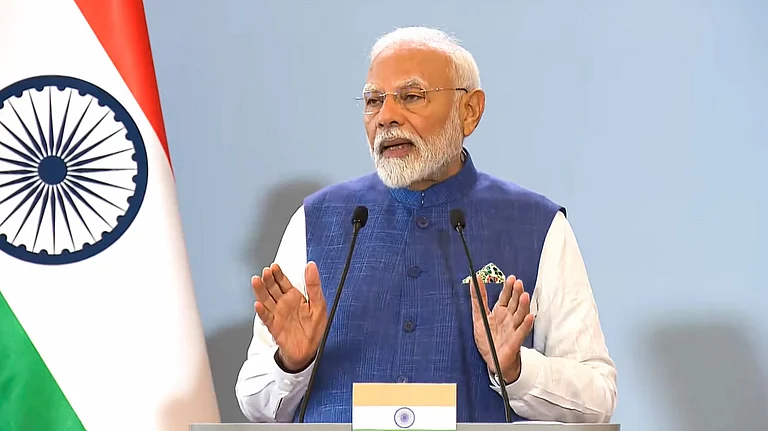Three more cheetahs were released into the wild at the Kuno National Park (KNP) in Sheopur district of Madhya Pradesh, taking the count to six, an official said on Saturday.
Three cheetahs - two males named Agni and Vayu and one female Gamini - were released into the wild at the KNP on Friday. All three of them had been brought to India from South Africa, J S Chouhan, Principal Chief Conservator of Forest (Wildlife) told PTI.
With this, six cheetahs have been released into the wild at the KNP so far. Now, 11 translocated felines and four cubs are left in the enclosures, he said.
Three Namibian female cheetahs, who were among the eight felines brought to the KNP in September last year, and one male are still kept in enclosures, the official said.
"One of the female Namibian cheetahs is to be released in the free-range in the next couple of days. Another female feline from Namibia couldn't be released as she gave birth to cubs. The third female cheetah is not fit for the release into the forest," he said.
Male Namibian cheetah Oban, who had strayed out of the conservation area and was rescued last month while moving towards Jhansi, is also kept in an enclosure, he said.
Eight Namibian cheetahs, comprising five females and three males, were brought to the KNP and released into special enclosures by Prime Minister Narendra Modi on September 17 last year as part of an ambitious reintroduction programme of the species.
Later, 12 cheetahs - seven males and five females - were brought to the KNP from South Africa on February 18 this year.
Of these 20 translocated felines, three cheetahs - Daksha, Sasha and Uday - died in enclosures the past two months.
The cheetah, named Siyaya, had given birth to four cubs in March this year at KNP.
The last cheetah died in India in Koriya district in present-day Chhattisgarh in 1947, and the species was declared extinct from the country in 1952.


























